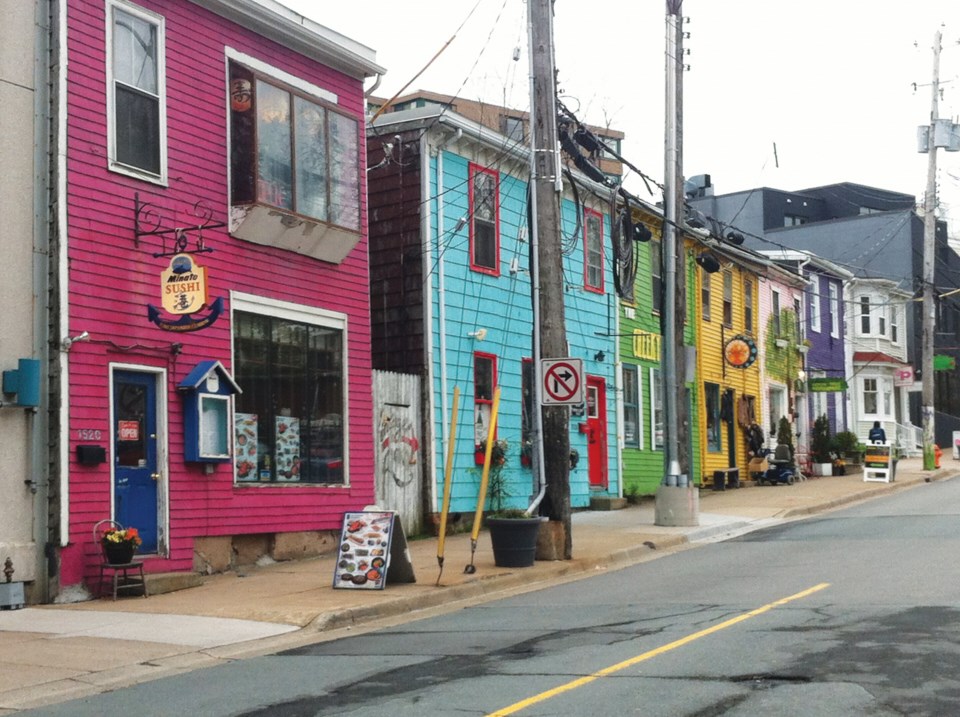The Halifax waterfront is full of surprises. On a breezy Saturday in June the boardwalk that lines this Nova Scotia port is packed with visitors. A Celtic harpist performs a gentle tune, banjo players sing a country song and on a dock two couples are demonstrating a swing dance to fiddle music. Many of the boardwalk strollers are stopping to quaff a brew at the waterside restaurants or they sit on the benches to people-watch while eating their lobster roll or poutine from a stand. (It’s all Canadian, eh?) I decline the poutine but go for the fish and chips – fresh haddock as it’s meant to be!
The boardwalk takes the visitor past the Maritime Museum of the Atlantic and a poster display that recalls in archival photos the great Halifax explosion of 1917. A French ship carrying explosives collided with a Norwegian vessel, setting off a blast that took out half a mile of the city. The display is not just a memorial to disaster – it honours the home town heroes who worked to save lives during the ensuing tragedy.
The silhouette of a sculpted figure against the back drop of the harbour brings to mind the epic poem by Longfellow about Acadian Evangeline. After a closer look, I see it is a sculpture in honour of early Lebanese settlers, a reminder of the many immigrant communities that make up this cosmopolitan city.
But what’s this at the next dock? Between a three-mast sailing ship and other boats, a huge, sleek vessel stretches her stabilising pontoons in a watery hug. She is called the Brigitte Bardot and is one of a fleet belonging to Sea Shepherd, a marine conservation society that challenges whalers and polluters. It takes all types to make an interesting harbour.
My goal today is to visit the Canadian Museum of Immigration at Pier 21, but in my boardwalk stroll I am temporarily waylaid by the Seaport Farmers’ Market. There is not much local produce yet, since maritime cool weather makes a short growing season, but oh, the baked treats, the aromatic homemade bread, the glittering crafts!
At Pier 21, the dockside building that has admitted so many immigrants to Canada, I pay $11 museum admission and ask about a display of war brides, the 48,000 women who followed their Canadian servicemen husbands from England and Europe after World War II. At the family genealogy centre on the main floor, Rose calls up on her computer the story of my mother’s journey as a new bride who arrived in Halifax in 1946. I discover that the young women guides are genuinely interested in meeting anyone with knowledge of those who entered the country while the Pier was a thriving gateway. Lauren offers to take me to the very spot, a covered walkway that once led from the ship’s gangplank to the Customs hall, where my mother first set foot in Canada. The sight brings on my tears and Lauren sympathetically cries with me. Pier 21 is full of such stories that both inspire and break hearts, told in video, photos and exhibits. I recommend it as part of a full Halifax waterfront experience.



